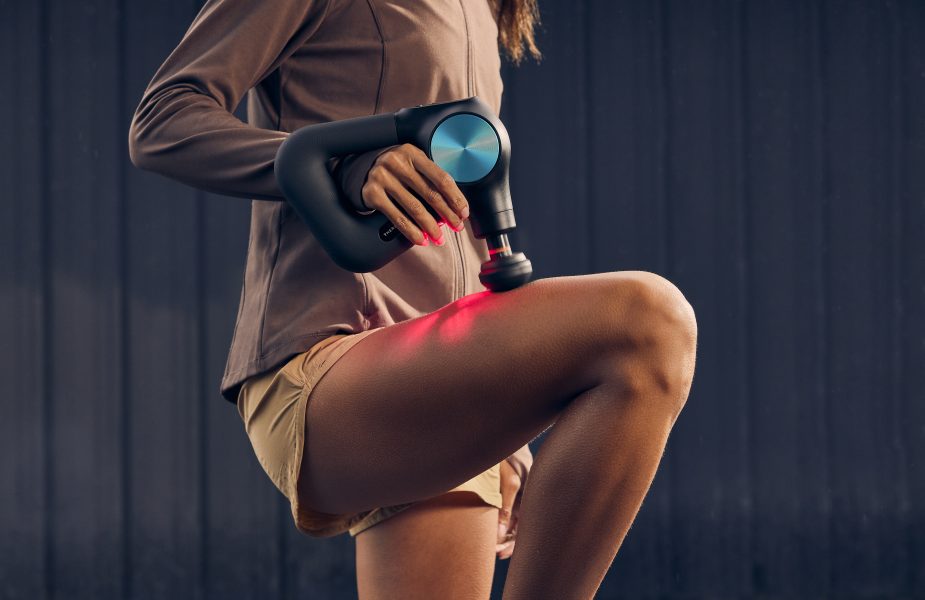Why more brands like Therabody are using FSAs to drive new sales

With as many as 40% of shoppers letting dollars in their flexible spending accounts expire each year, health and wellness brands like Therabody are experimenting with new ways to streamline spending for shoppers as 2023 comes to a close. That includes new payment services and marketplace-style approaches.
John Solomon, chief marketing officer for Therabody, said the brand typically advertises to its customers that its popular massage tools, known as Theraguns, are eligible to be covered by health spending accounts. More than 190 of Therabody’s products qualify.
Historically, shoppers have had to bring their receipt to their FSA or HSA account holder to get reimbursed for an eligible purchase. But this year, Therabody decided to introduce a new way for shoppers to pay from those accounts using a vendor called Sika Health. Instead of having to submit for reimbursement, the customer can now pay directly from their accounts by picking the option at checkout, similar to any other digital wallet button. Sika also generates inbound traffic with a marketplace-style landing page that shows FSA or HSA account holders who sell eligible products.
After just three weeks, the service has outperformed expectations, Solomon said, and contributed to a bump in the brand’s NPS score. They’re also bringing more attention to the service with targeted marketing and advertising the payment method on product description pages.
“We saw this huge opportunity,” he said. “The fact it’s such a seamless experience is a real benefit to your customer base,” he said.
The number of brands that are actively courting FSA dollars is growing as shoppers set aside more dollars in their tax-free FSA and HSA accounts, and the federal government expands coverage to things like period care products. The Employee Benefits Research Institute, for example, had a national database of 2.4 million FSA accounts as of the end of 2021, up from 1.9 million the year before.
In response, a growing number of health tech companies are looking to make it easier for shoppers to use FSA and HSA dollars online, like Sika, Binkey and Truemed. Not only do these vendors aim to make the payments side more streamlined, but they say they can help with back-end eligibility verification to ensure only covered products are being purchased.
On the consumer-facing side, FSA and HSA eligibility is increasingly being called out. Sephora, for example, has a landing page for eligible skin care products. But shoppers must request reimbursement from their account holder, while a third-party interface like Sika lets shoppers link their car information directly. Similarly, Amazon has developed landing pages and categories to help shoppers find eligible products, and connect a user’s card to their account.
Ami Kumordzie, an MD-turned-founder who launched Sika Health, said that the company is working to scale its operations by bringing on new clients and increasing the number of products a shopper has access to. Sika will get affiliate revenue from the marketplace. Right now, its shop page links out to about 40 brands that offer more than 18,000 SKUs, she said.
“Consumers are finding us,” she said. “It’s a virtuous cycle. We go live on a place like Therabody, they see us at checkout, they Google us and it cross-pollinates our platform.”
So far, Sika has averaged 8% to 10% revenue lift from its brand customers once they introduce the payments technology. Shoppers who use their FSA or HSA accounts also spend 30% to 50% more across the brands.
“I don’t think anyone owns this space,” Solomon said. “But this is growing and more and more people are getting this, with more and more health care coverage having these kind of benefits.”
This area of health technology and payments is a hot space for growing startups. Christina Farr, a health tech investor and principal at OMERS Ventures, said the FSA/HSA eligibility issue is one that’s become more popular among investors. Sika raised $5 million in its seed stage last year, which saw at least 926 funding deals in the health space, according to a Deloitte analysis of Pitchbook data. That year saw about $27.5 billion in investment total, a drop from the VC boom of 2021 but still 30% higher than funding in 2020. Farr said that it’s largely because of the growing awareness that exists around what products can be covered and the billions on the table in expiring dollars.
While some shoppers may typically use FSA or HSA dollars for doctor visits or eyewear, items like humidifiers, sunglasses and breast pumps are also covered.
“People are forgetting to make that deadline and they lose that money,” she said.
At the same time, medical inflation is on the rise, and shoppers are interested in finding ways to pay for health and wellness needs, Farr said.
“We are prioritizing our health and you’re seeing that,” she said. “A lot of consumer health companies are opening up and doing quite well.”
Moving forward, the vision for Sika is to partner with the HSA account administrators so that the shoppers have a direct link to Sika’s brands and their eligible products, similar to how payment apps like Klarna or Shop are set up. Kurmordzie also sees potential in adding pharmacy benefits or SNAP benefits to accounts to make it easier for people to use those dollars online.
“This is ultimately a new channel for revenue, and it’s a way to capture a consumer that’s otherwise difficult to find,” she said.

